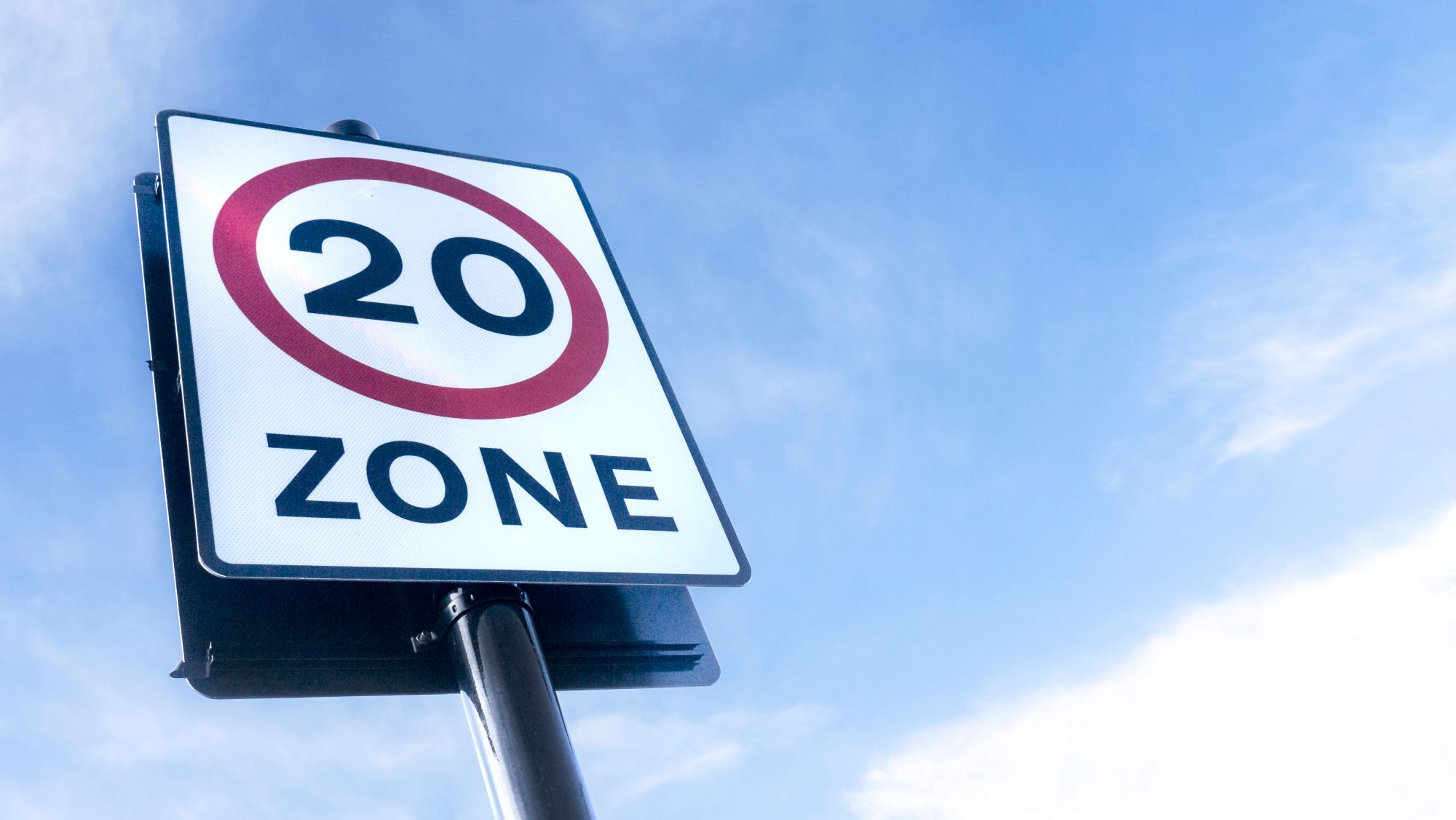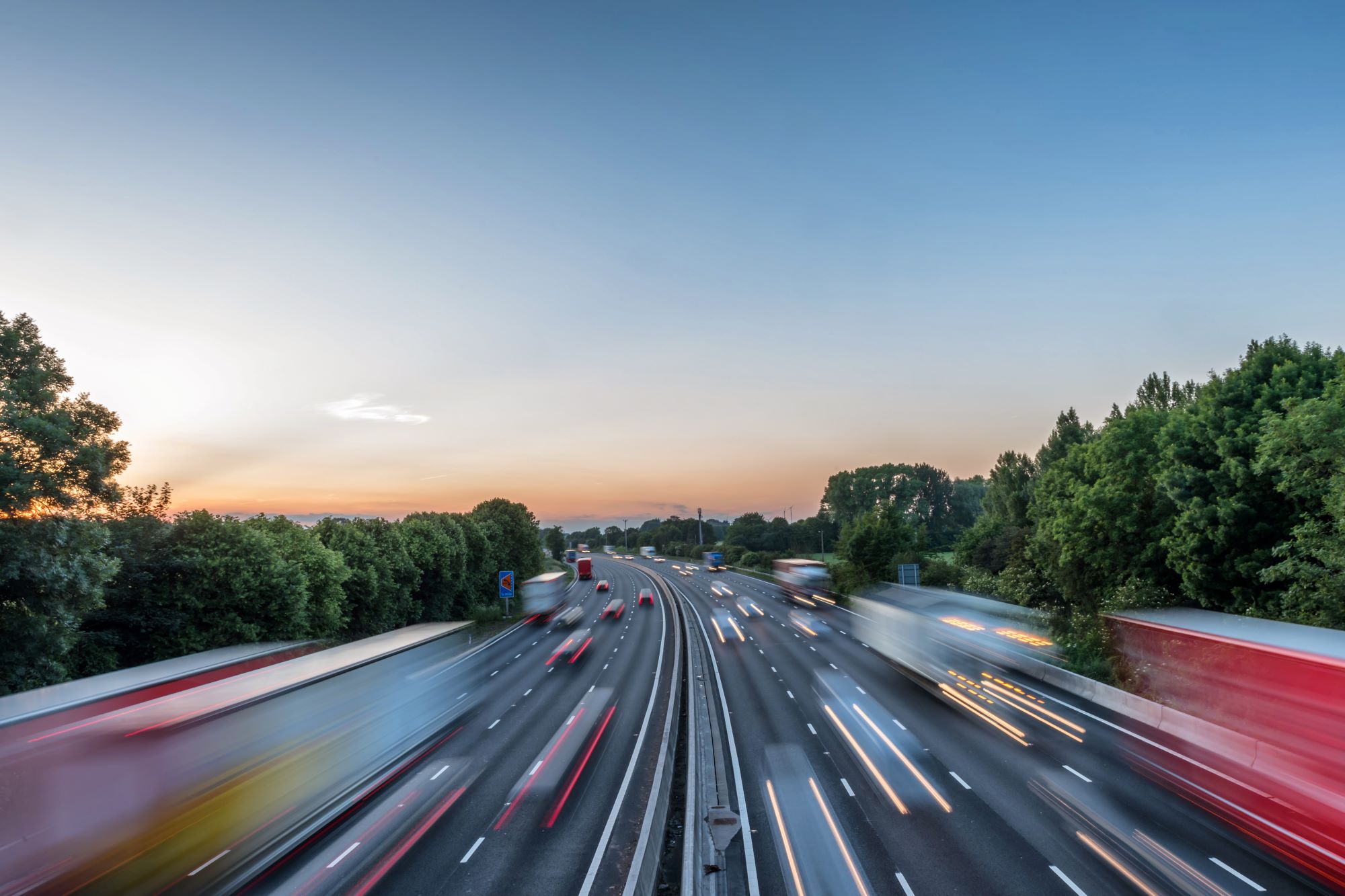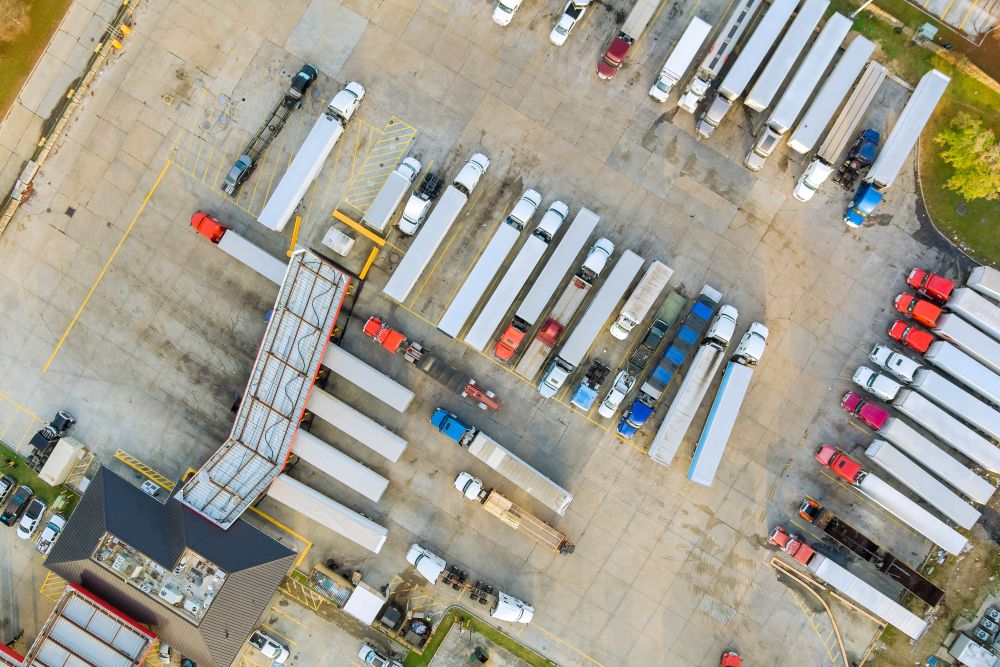
Susie Jones
Jakie są konsekwencje ograniczenia prędkości do 20 km/h dla flot?
Utworzony: 16.04.2025
•
Aktualizacja: 16.04.2025
W 2023 r. 188 pojazdy ciężarowe uczestniczyły w kolizjach, które skutkowały ofiarami śmiertelnymi, co stanowi spadek w porównaniu z 2022 r., ale mimo to jest niepokojącą statystyką. Wypadki te mogły wynikać z kilku czynników, takich jak zmęczenie kierowcy, złe utrzymanie pojazdu, warunki pogodowe lub działania innych użytkowników dróg. Jednak dane organizacji charytatywnej Brake sugerują, że 58% zgonów związanych z ruchem drogowym miało prędkość zgłoszoną jako czynnik bezpieczeństwa na drodze. Na tym blogu zbadamy, w jaki sposób wdrożenie ograniczeń prędkości do 20 mil na godzinę może wpłynąć na działalność floty i obniżyć liczbę ofiar śmiertelnych.
Gdzie dochodzi do wypadków z udziałem samochodów ciężarowych?
Według EROS, tylko 10% kolizji z udziałem pojazdów ciężarowych miało miejsce na autostradach - pozostałe 90% częściej miało miejsce na drogach miejskich lub wiejskich. Drogi wiejskie stawiają kierowców ciężarówek w obliczu wąskich przestrzeni, ostrych zakrętów i interakcji z niechronionymi użytkownikami dróg, takimi jak rowerzyści i piesi, co zwiększa prawdopodobieństwo wypadków. Obszary miejskie stanowią większe zagrożenie dla kierowców ciężarówek ze względu na większe zagęszczenie ruchu, częste postoje, aktywność pieszych i złożone układy drogowe - w połączeniu z nieprzewidywalnością dróg miejskich sprawiają, że stanowią one większe zagrożenie dla kierowców ciężarówek.
Wpływ stref 20mph.
Dane opublikowane przez [rząd walijski] (https://motortransport.co.uk/industry-news/fleetcheck-urges-operators-to-back-calls-for-wider-use-of-20mph-speed-limits/25490.article) wykazały o 100 mniej ofiar na drogach miejskich w 2024 r. w porównaniu z tym samym okresem w 2023 r., zanim ograniczenie prędkości do 20 mil na godzinę zostało wprowadzone na obszarach miejskich.
Program jest wspierany przez organizacje takie jak Brake i Cycling UK, a teraz specjaliści od zarządzania flotą FleetCheck zachęcają firmy transportowe do poparcia programu. Argumentują oni, że przejście z prędkości 30 km/h na 20 km/h będzie miało minimalny wpływ na wydajność floty i zdecydowanie wzmacniają ideę, że każdego roku będzie to ratować życie.

Co floty i kierowcy sądzą o ograniczeniu prędkości do 20 km/h?
Według FleetCheck, przewoźnicy mieli mieszane uczucia wobec tej inicjatywy. Niektórzy postrzegali zmiany jako przeszkodę dla wydajności - argumentując, że niższe ograniczenia prędkości mogą zmusić niektóre floty do zmniejszenia liczby dostaw, które mogą wykonać w danym okresie.
Kierowcy na stronach mediów społecznościowych SNAP mieli silne uczucia wobec tej sugestii. Jeden z kierowców skomentował:
"Kto poprze więcej stref 20 mil na godzinę? Problemem jest cały standard jazdy. Odkąd wyszliśmy z lockdownu, standard jazdy jest diaboliczny, wliczając w to samochody osobowe, dostawcze i ciężarowe".
W mediach społecznościowych nastroje pozostały takie same, a wiele osób nie popierało tej zmiany.
Korzyści z większej liczby stref 20 mil na godzinę.
Strefy ograniczonej prędkości oferują szereg korzyści dla kierowców ciężarówek.
Niższe prędkości poprawiają czas reakcji i skracają drogę hamowania, ułatwiając unikanie kolizji - szczególnie w obszarach miejskich.
Samochody ciężarowe są bardziej narażone na mniejsze zużycie przy ograniczeniu prędkości.
Przeszkody, jakie mogą napotkać firmy flotowe.
Jak wspomniano, niektóre firmy flotowe obawiają się, że niższe ograniczenia prędkości mogą zmniejszyć liczbę dostaw, które mogą wykonać w danym okresie. Floty mogą również stanąć przed następującymi wyzwaniami:
Dłuższy czas podróży: wpływający na dostawy wrażliwe czasowo, wpływający na harmonogram i oczekiwania klientów.
Planowanie tras: firmy mogą być zmuszone do dostosowania tras, aby uwzględnić wolniejsze prędkości.
Zgodność:** inwestowanie w dodatkowe szkolenia kierowców w celu zapewnienia zgodności z nowymi ograniczeniami prędkości będzie miało kluczowe znaczenie.
Chociaż kwestie te mogą stanowić dodatkowe wyzwanie dla firm flotowych, wieloma z nich można zarządzać proaktywnie. Wielu twierdzi, że długoterminowe korzyści w zakresie bezpieczeństwa przeważają nad przeszkodami.

Liczby mówią same za siebie.
W odnowionej kampanii zatytułowanej Hazardous Highways, SNAP zidentyfikował najbardziej niebezpieczne lokalizacje w Wielkiej Brytanii. Zagłębiliśmy się głębiej, aby odkryć, które drogi mogłyby skorzystać na zmniejszeniu ograniczenia prędkości.
SNAP odkrył, że najbardziej niebezpieczne drogi znajdują się na południowym wschodzie. Kent ma najbardziej niebezpieczne drogi w Wielkiej Brytanii i [proponuje cel zerowej liczby śmiertelnych ofiar wypadków drogowych] (https://www.kent.gov.uk/roads-and-travel/road-safety/vision-zero-road-safety-strategy?utm_source=chatgpt.com) w sieci autostrad Kent do 2050 roku. Które drogi są najbardziej niebezpieczne?
A254:** Krótka droga o długości zaledwie czterech mil została uznana za najbardziej ryzykowną trasę w Wielkiej Brytanii w 2018 roku. W raporcie wyróżniono odcinek A254 między skrzyżowaniem z A28 w Margate a skrzyżowaniem z A255 w pobliżu Ramsgate. Ograniczenie prędkości na tym odcinku waha się między 30 a 40 km/h - obszary zabudowane i duży ruch z portu w Dover sprawiają, że droga ta jest szczególnie niebezpieczna dla rowerzystów, pieszych i innych użytkowników dróg. Czy ten odcinek drogi mógłby skorzystać na niższych ograniczeniach prędkości?
A252:** Znana z wysokiego wskaźnika wypadków, droga A252 biegnie przez 8,7 mili. W 2020 r. rozpoczęto prace mające na celu zmniejszenie liczby i ciężkości wypadków, a wśród zmian znalazło się zmniejszenie prędkości z 60 do 50 mil na godzinę na tym odcinku, z wyjątkiem miejsc, w których obowiązują niższe limity. Czy to jednak wystarczy, aby pozbyć się reputacji drogi jako jednej z najgorszych w Wielkiej Brytanii?
Surrey i Essex również znalazły się na szczycie listy i odnotowały łącznie [30 378] (https://www.number1plates.com/blog/britains-worst-areas-for-road-accidents/#:~:text=With%2020%2C473%20recorded%20accidents%20from,as%20some%20of%20the%20worst.) wypadków w ciągu ostatnich pięciu lat. Wysoki wskaźnik wypadków w Surrey można przypisać mieszance zaludnionych miast i wiejskich dróg. Bliskość Londynu i głównych autostrad skutkuje większą liczbą kolizji.
M25:** Znana również jako London Orbital Motorway, M25 jest jedną z najbardziej ruchliwych dróg w Wielkiej Brytanii, będąc jednocześnie drugą co do długości obwodnicą w Europie. W latach 2007-2016 odnotowano na niej 7 673 wypadki i 80 ofiar śmiertelnych. Jako kluczowa autostrada, dostosowanie prędkości do 20 mil na godzinę byłoby niedorzeczne. Czy jednak M25 skorzystałaby na strefach ograniczonej prędkości?
A3: Ciągnąca się przez 67 mil, A3 może być trudną drogą do jazdy ze względu na duże natężenie ruchu, ograniczenia prędkości i odcinki o złych warunkach drogowych.
Często zadawane pytania
Jakie jest maksymalne ograniczenie prędkości dla ciężarówek?
Kierowcy ciężarówek muszą przestrzegać surowych przepisów dotyczących prędkości. Ograniczenia te mają na celu uwzględnienie rozmiaru, wagi i zdolności hamowania ciężarówki.
Drogi jednojezdniowe:** Ciężarówka o masie powyżej 7,5 tony może poruszać się z maksymalną prędkością 50 mil na godzinę.
Drogi dwujezdniowe: 60 km/h to maksymalne ograniczenie prędkości dla ciężarówek o masie powyżej 7,5 tony.
Autostrady:** Kierowcy ciężarówek nie mogą przekraczać prędkości 60 km/h na autostradzie.
Przepisy dotyczące ograniczników prędkości w Wielkiej Brytanii W Wielkiej Brytanii ograniczniki prędkości muszą być zainstalowane w każdej ciężarówce, aby ograniczyć maksymalną prędkość, z jaką może poruszać się pojazd.
Wymagania prawne w Wielkiej Brytanii:** Wszystkie ciężarówki powyżej 3,5 tony muszą mieć ogranicznik prędkości ustawiony na 56 mph.
Jak działają:** Ograniczniki prędkości ograniczają ilość paliwa dostarczanego do silnika, gdy pojazd osiągnie zadaną prędkość - zapewniając, że kierowcy nie mogą przekroczyć limitu.
Czy prywatna ciężarówka potrzebuje ogranicznika prędkości?
Prywatna ciężarówka nie wymaga ogranicznika prędkości, chyba że jest używana do celów komercyjnych. Należy zadeklarować, czy pojazd nie wymaga ogranicznika prędkości podczas przeglądu technicznego, wypełniając [formularz deklaracji ogranicznika prędkości] (https://www.gov.uk/government/publications/hgv-speed-limiter-exemption-declaration-form).



